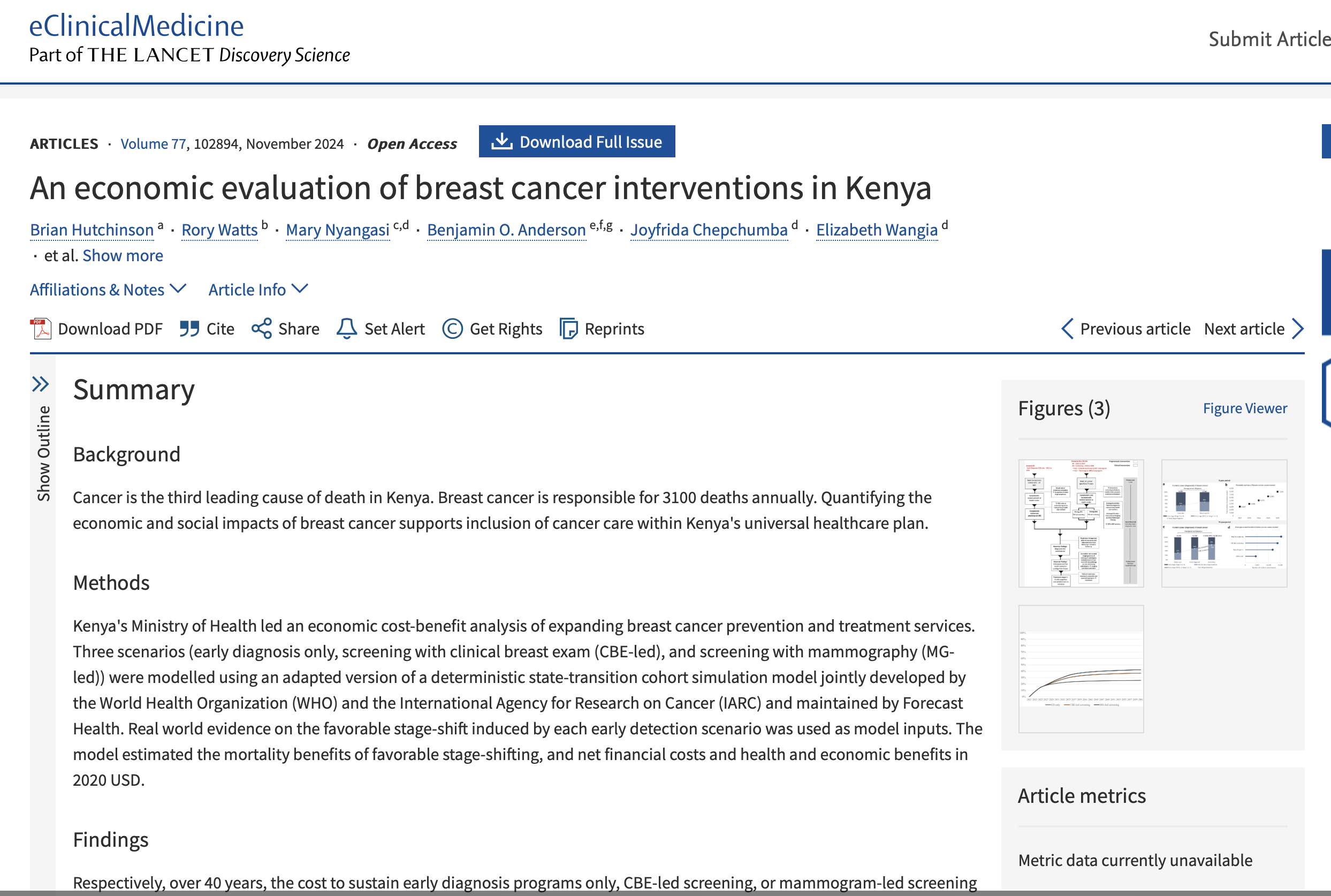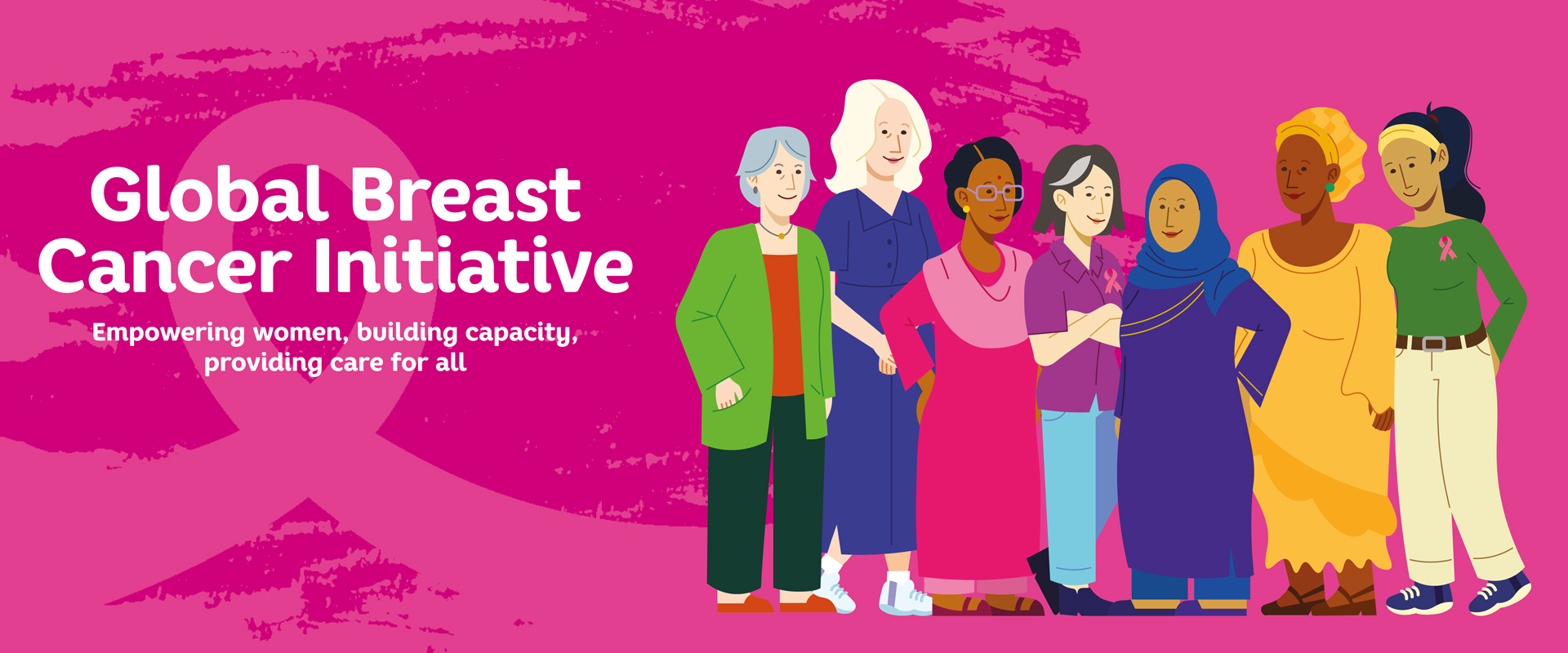An economic evaluation of breast cancer interventions in Kenya
eClinical Medicine
07 Nov 2024

Background
Cancer is the third leading cause of death in Kenya. Breast cancer is responsible for 3100 deaths annually. Quantifying the economic and social impacts of breast cancer supports inclusion of cancer care within Kenya's universal healthcare plan.
Methods
Kenya's Ministry of Health led an economic cost-benefit analysis of expanding breast cancer prevention and treatment services. Three scenarios (early diagnosis only, screening with clinical breast exam (CBE-led), and screening with mammography (MG-led)) were modelled using an adapted version of a deterministic state-transition cohort simulation model jointly developed by the World Health Organization (WHO) and the International Agency for Research on Cancer (IARC) and maintained by Forecast Health. Real world evidence on the favorable stage-shift induced by each early detection scenario was used as model inputs. The model estimated the mortality benefits of favorable stage-shifting, and net financial costs and health and economic benefits in 2020 USD.
Findings
Respectively, over 40 years, the cost to sustain early diagnosis programs only, CBE-led screening, or mammogram-led screening would require 1.4, 2.8, or 5.2 percent increases above current government health spending. All three strategies are economically efficient in the long run. Net economic benefits of expanded breast cancer care using clinical breast exam screening are $2.3 billion dollars (USD) over the next 40 years with 236,000 women's lives saved in Kenya. Mammographic screening provides net benefits of $1.9 billion (USD) with an additional 34,000 lives saved over 40 years compared to the CBE-led screening approach. Over 40 years, an early diagnosis-only strategy saves the fewest lives and has the lowest net benefit among the three strategies.

